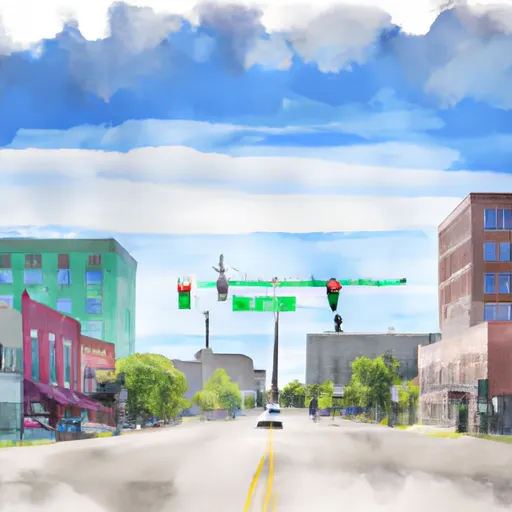-
 Snoflo Premium
Snoflo Premium
Get unlimited access to all our content
With no Ad interruptions! - Start Your Free Trial Login with existing account
Santa-Claus
Eden Index
Climate
8.1
•
Recreation
3.4
•
Community
2.3
•
Safeguard
5.0/10

Santa Claus, Indiana is a small town located in Spencer County, in the southwestern part of the state. The climate in Santa Claus is classified as humid continental, with warm, humid summers and cold winters. Average summer temperatures range from the mid-70s to low 90s Fahrenheit, while winter temperatures can drop to the mid-teens. Precipitation is fairly evenly distributed throughout the year, with an annual average of around 45 inches.
Hydrologically, Santa Claus is situated near several bodies of water, including the Ohio River, which lies just to the south, and nearby Pigeon Creek. These waterways provide opportunities for boating, fishing, and other water-based activities.
Outdoor recreation is abundant in Santa Claus, with several parks and recreational areas in the area. One of the highlights is Holiday World & Splashin' Safari, a popular amusement park and water park that offers thrilling rides and attractions for all ages. Additionally, Lincoln State Park, located nearby, provides over 1,700 acres of picturesque forests, trails, and a scenic lake, offering opportunities for hiking, camping, fishing, and wildlife watching. Overall, Santa Claus, Indiana offers a charming small-town atmosphere with a variety of outdoor recreation options for visitors and residents alike.
What is the Eden Index?
The Snoflo Eden Index serves as a comprehensive rating system for regions, evaluating their desirability through a holistic assessment of climate health, outdoor recreation opportunities, and natural disaster risk, acknowledging the profound impact of these factors on livability and well-being.
Climate Health Indicator (CHI): 8.1
Santa-Claus receives approximately
1213mm of rain per year,
with humidity levels near 85%
and air temperatures averaging around
14°C.
Santa-Claus has a plant hardyness factor of
6, meaning
plants and agriculture in this region thrive during a short period during spring and early summer. Most
plants will die off during the colder winter months.
By considering the ideal temperature range, reliable water supplies, clean air, and stable seasonal rain or snowpacks, the Climate Health Indicator (CHI) underscores the significance of a healthy climate as the foundation for quality living.
A healthy climate is paramount for ensuring a high quality of life and livability in a region, fostering both physical well-being and environmental harmony. This can be characterized by ideal temperatures, reliable access to water supplies, clean air, and consistent seasonal rain or snowpacks.
Weather Forecast
Streamflow Conditions
Lower Ohio
Area Rivers
Lower Ohio
Snowpack Depths
Lower Ohio
Reservoir Storage Capacity
Lower Ohio
Groundwater Levels
Recreational Opportunity Index (ROI): 3.4
The Recreational Opportunity Index (ROI) recognizes the value of outdoor recreational options, such as parks, hiking trails, camping sites, and fishing spots, while acknowledging that climate plays a pivotal role in ensuring the comfort and consistency of these experiences.
Access to outdoor recreational opportunities, encompassing activities such as parks, hiking, camping, and fishing, is crucial for overall well-being, and the climate plays a pivotal role in enabling and enhancing these experiences, ensuring that individuals can engage in nature-based activities comfortably and consistently.
Camping Areas
| Campground | Campsites | Reservations | Toilets | Showers | Elevation |
|---|---|---|---|---|---|
| West Boggs Park | 220 | 528 ft | |||
| Glendale State Fish and Wildlife Area | 120 | 495 ft | |||
| Vastwood Co Park | 21 | 490 ft | |||
| Ferdinand State Forest | 70 | 489 ft | |||
| Crane MWR Military | None | 594 ft | |||
| Lincoln State Park | 270 | 467 ft | |||
| Point Mallard City Campground | None | 568 ft | |||
| Dubois County Park | 32 | 575 ft | |||
| Montgomery Rec Park | None | 515 ft | |||
| Martin State Forest | 25 | 743 ft |
Nearby Ski Areas
Catastrophe Safeguard Index (CSI):
The Catastrophe Safeguard Index (CSI) recognizes that natural disaster risk, encompassing floods, fires, hurricanes, and tornadoes, can drastically affect safety and the overall appeal of an area.
The level of natural disaster risk in a region significantly affects safety and the overall livability, with climate change amplifying these risks by potentially increasing the frequency and intensity of events like floods, fires, hurricanes, and tornadoes, thereby posing substantial challenges to community resilience and well-being.
Community Resilience Indicator (CRI): 2.3
The Community Resilience Indicator (CRI) recognizes that education, healthcare, and socioeconomics are crucial to the well-being of a region. The CRI acknowledges the profound impact of these elements on residents' overall quality of life. By evaluating educational resources, healthcare accessibility, and economic inclusivity, the index captures the essential aspects that contribute to a thriving community, fostering resident satisfaction, equity, and social cohesion.

